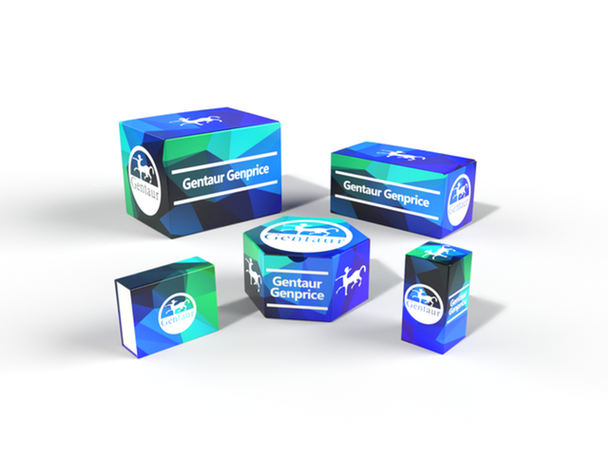Description
SATB2 Antibody | 4627 | Gentaur UK, US & Europe Distribution
Host: Rabbit
Reactivity: Human, Mouse, Rat
Homology: N/A
Immunogen: SATB2 antibody was raised against a 16 amino acid synthetic peptide near the amino terminus of the human SATB2.
The immunogen is located within the first 50 amino acids of SATB2.
Research Area: Signal Transduction
Tested Application: E, WB, IHC-P, IF
Application: SATB2 antibody can be used for detection of SATB2 by Western blot at 2 - 4 μg/mL. Antibody can also be used for immunohistochemistry starting at 5 μg/mL. For immunofluorescence start at 20 μg/mL.
Antibody validated: Western Blot in mouse samples; Immunohistochemistry in human samples and Immunofluorescence in human samples. All other applications and species not yet tested.
Specificiy: At least two isoforms of SATB2 are known to exist. This SATB2 antibody will not cross-react with SATB1.
Positive Control 1: Cat. No. 1403 - Mouse Brain Tissue Lysate
Positive Control 2: Cat. No. 10-301 - Human Brain Tissue Slide
Positive Control 3: N/A
Positive Control 4: N/A
Positive Control 5: N/A
Positive Control 6: N/A
Molecular Weight: N/A
Validation: N/A
Isoform: N/A
Purification: SATB2 Antibody is affinity chromatography purified via peptide column.
Clonality: Polyclonal
Clone: N/A
Isotype: IgG
Conjugate: Unconjugated
Physical State: Liquid
Buffer: SATB2 Antibody is supplied in PBS containing 0.02% sodium azide.
Concentration: 1 mg/mL
Storage Condition: SATB2 antibody can be stored at 4˚C for three months and -20˚C, stable for up to one year. As with all antibodies care should be taken to avoid repeated freeze thaw cycles. Antibodies should not be exposed to prolonged high temperatures.
Alternate Name: SATB2 Antibody: KIAA1034, DNA-binding protein SATB2, Special AT-rich sequence-binding protein 2
User Note: Optimal dilutions for each application to be determined by the researcher.
BACKGROUND: SATB2 Antibody: Human special AT-rich sequence-binding protein-2 (SATB2) is a nuclear matrix/scaffold-associated region DNA-binding protein. Like its homolog SATB1, SATB2 selectively binds double-stranded, special AT-rich DNA sequences, but is expressed primarily in a subset of postmitotic, differentiating neurons in the neocortex. Mice deficient in SATB exhibit craniofacial abnormalities and defects in osteoblast differentiation and function. SATB2 also interacts with and enhances the activity of Runx2 and ATF4, two transcription factors that regulate osteoblast differentiation, indicating that SATB2 acts as a molecular node in a transcriptional network regulating skeletal development and osteoblast differentiation. Recent experiments have shown that SATB2 interacts with histone deacetylase 1 and metastasis-associated protein 2, two proteins that are involved in chromatin remodeling, suggesting that SATB2 may also be involved in mediating epigenetic influences during cortical development.






